Prologue
Now on the Internet you can find several useful tutorials (all links at the end of the article) on how to assemble a drone on a 250 frame. But, collecting my first quadric on these articles, I ran into problems that were not covered in any way. Namely: I did not find the full sheet of parts and additional equipment that I need, the price of a complete assembly, as well as some practical and theoretical issues. That is why it was decided to make this article in the form of a generalization of my personal experience and the experience of other people in order to help beginners (such as myself) to build their first drone as efficiently as possible.
1 part will be devoted to the selection of details, Equipment, assembly and connection of all the nodes of the copter. The program side will be considered in two parts.
Immediately report on what I did:
The video shows that during the flight the drones disappeared, but more on that later
List of frequently asked questions:
In : Is it not easier to buy ready Quadric and fly?
Oh : It’s easier, only if you’re not going to continue to improve your drone and build others. That is, you just want to fly, but do not rack your brains and waste precious time. In any case, the drone store is easier to learn and easier to use. As an alternative, I can offer MJX Bugs 3. An overview of it here. The price from ~ 120 $.
In : Is it necessary to solder?
Oh : Yes, it is necessary!
] In : Collecting a quadric is cheaper than buying in a store?
Oh : No! I consider this an error. If you are a beginner, and since you are reading this article, most likely it is, then in addition to the details for quadrocopter you will need a lot more. I enclose the list below.
The list to purchase:
In order not to bother with the selection of the main components, I see an excellent alternative to buying a ready-made set. Without losing time on the selection of parts, you will get everything you need.
Receiver and Transmitter Turnigy 9X
2) The radio control Turnigy 9X 9Ch + the receiver (all in one set) ~ 3400 rubles.
In : Why this model ?
Oh : First, there are 9 independent channels, that is, a huge supply of opportunities for the future. Secondly, a huge amount of information on configuration and firmware. Very popular model among modelers. But if you are VERY serious, I advise Turnigy 9XR or 9XR-Pro.
In : Is it possible to take a model that is cheaper?
Oh : Yes, This is completely your choice. I do not advise you to take the equipment less than with 6 channels, because in addition to control it is necessary to switch flight modes. By the way, there are ready-made sets already with equipment, for example, such.
3) At least 2 additional sets of propellers (in the kit 4 pieces: 2 left, 2 right) ~ 0-100 rub.
Propellers are really an expendable material for the first flights, so it’s better to take it with reserve. Ironically, it’s more expensive to order from China, and to wait a long time. The maximum diameter is 5 inches. I bought it here.

Accumulators with Aliexpress. Both went out of order. The left bank was denied by the second bank, and the third one by the right bank.
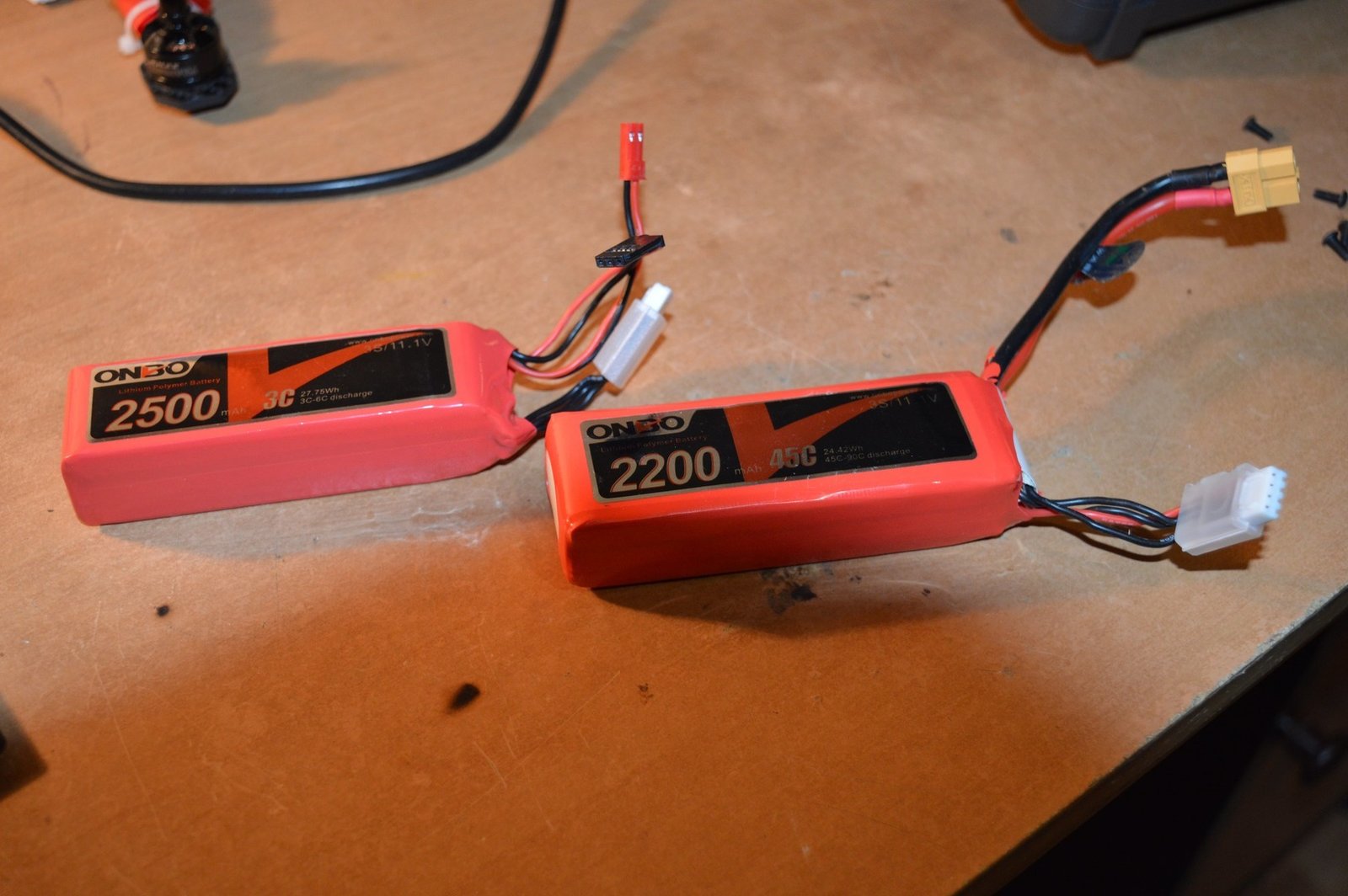
Left: battery for remote control with JR connector (black head). Right: battery for powering the quadrocopter
4) At least 1 battery for powering the quadrocopter, and better 2 ~ 1239-2478 rub.
: Why two? Are you alone enough?
Oh: Yes, it is not enough! The battery lasts about 10-12 minutes of flight, and it charges 1-2 hours, so that if you enter courage, do not go charging, and fly on, I advise you to take a pair. Pay attention to the marking of batteries, read about it here.
I strongly advise you not to buy batteries from China: both batteries ordered by me went out of order, that is, they ceased to issue the required voltage (one bank refused). Yes, it may be the case, but there were no such problems with other batteries, and a saving of 150 rubles. It is not worth the risk.
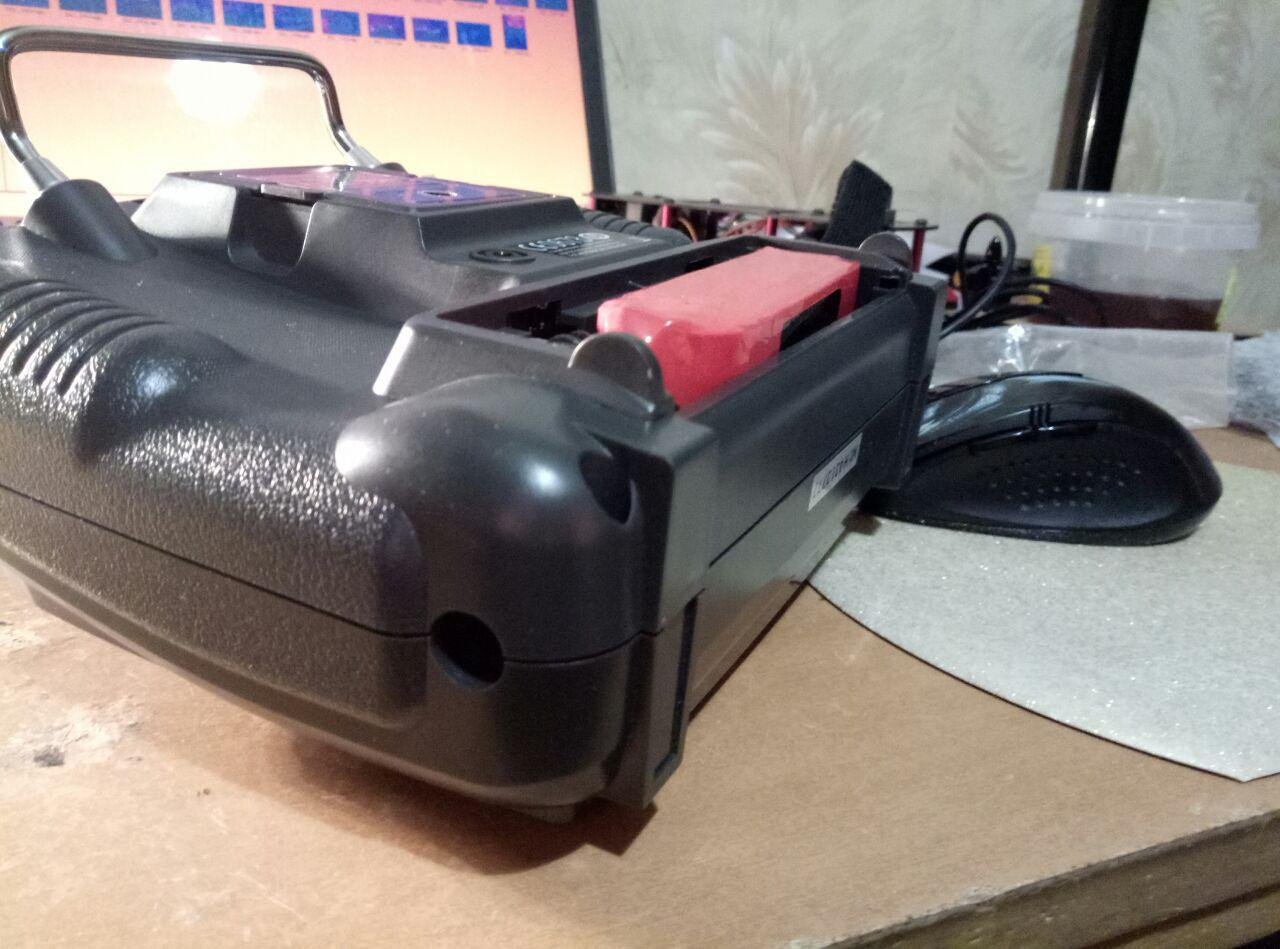
Turnigy 9X with battery. Sits very tightly, the lid is closed
5) The battery for the remote control. ~ 1199 rubles.
In : I already bought two. Need one more?
Oh : That’s right. For the transmitter, a special battery with a low discharge current is needed.
In the standard kit, the remote comes with a battery holder, which is not acceptable for frequent departures. I explain: the voltage of the battery is lost quickly, with the charging problem, and the cost is high. Also, you should pay attention to the presence of a JR battery connector. In this case, you do not need to re-solder anything. By the way, if you are going to buy another battery (not like mine), do not be lazy to take the console with you to try it on. I fit into the standard compartment with difficulty, but the lid still closes.
6) Battery charger for iMAX B6 ~ 1230 rubles.
iMAX B6 allows you to charge banks Evenly with a balancing connector. The most popular charge.
In : How to use it? What regimes to choose?
About : Answers here
7) Adapter with XT-60 to T-connector ~ 140 rubles.
If you take the same batteries for powering the quadrocopter, like me, you need an adapter for charging, as it does not exist in the standard iMAX B6 set.
8) Voltage indicator for 1-8 cans of Li-Po battery ~ 230 rub.
This thing will show the voltage on the banks, and also notify you when the charge falls below the level you set, so that the copter does not fall from the height and the battery has lived for a long time. Video on how to use.
9) Tarrot fastener 300 mm for attaching the battery (2 pieces included). Elastic strap 22 * 200mm for attaching the camera. ~ 90 + 50 rubles.
Clasps and straps are purely personal business. The way your battery and camera will be fixed is limited only by your imagination. Note the dimensions of the straps.
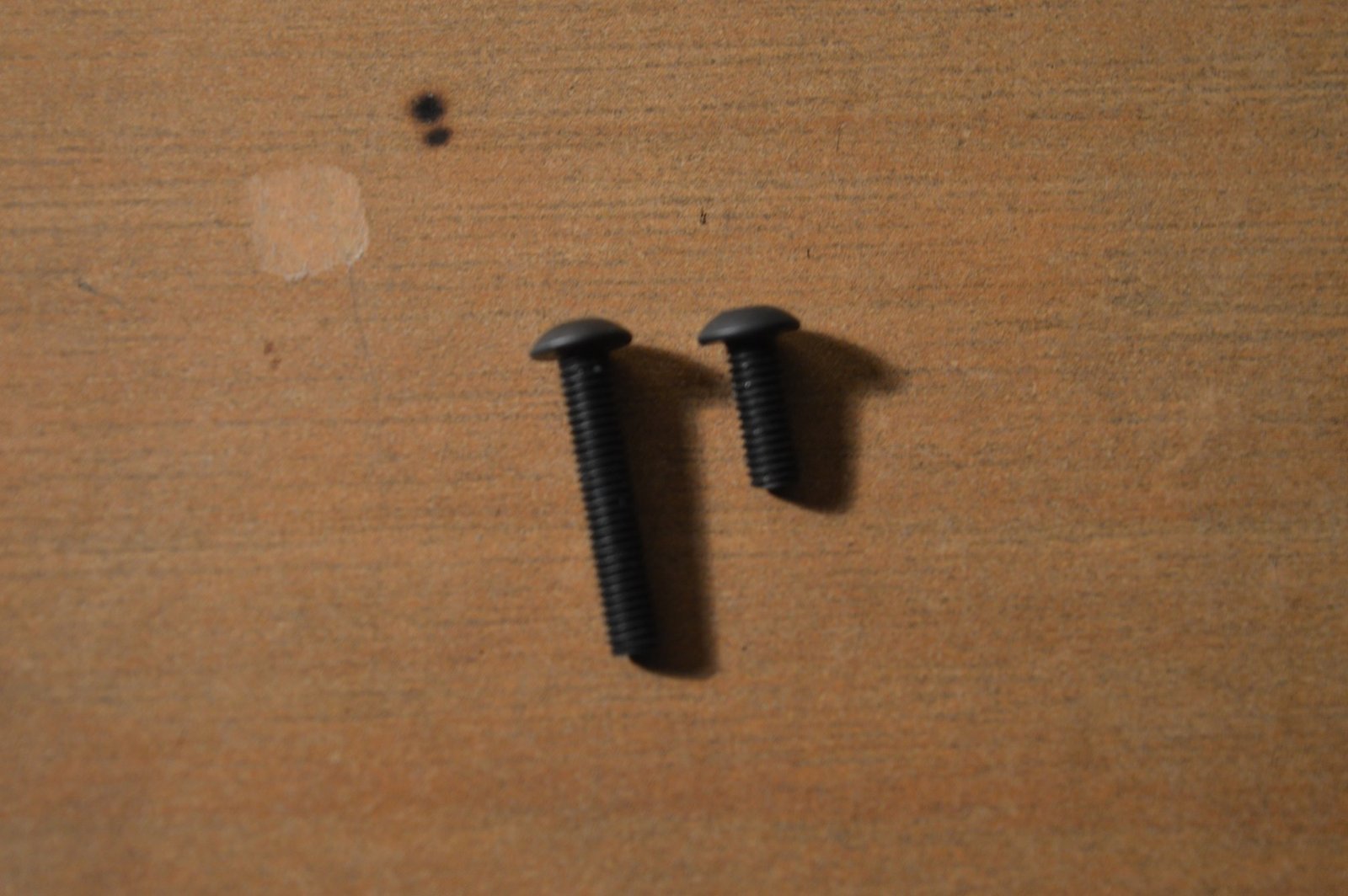
4 screws for 16 mm instead of 8 mm
10) Small thing ~ 300 rubles ]
10.1 20 washers for screws on the frame and screws holding the motors. The fact is that the hats of the screws are small and when they are tight, they damage the frame
10.2 4 screws per 16 mm instead of 8 mm. With the help of such screws it was possible to fix also the legs printed on the 3D printer (video from the press). Standard legs broke after one hard landing, found an alternative in the printed ones. In general, high legs are a useful thing when taking off from the ground or a wet surface
10.3 Heat shrink. Useful when you hide regulators
10.4 Plastic clamps 10 cm (9 pcs.) For fixing the regulators
10.5 Double-sided tape, electrical tape
10.6 Screw and nut for the camera. The situation is similar to the straps – completely your imagination
10.7 Elastic bands. Suitable for fixing the receiver, controller, distribution board and controllers
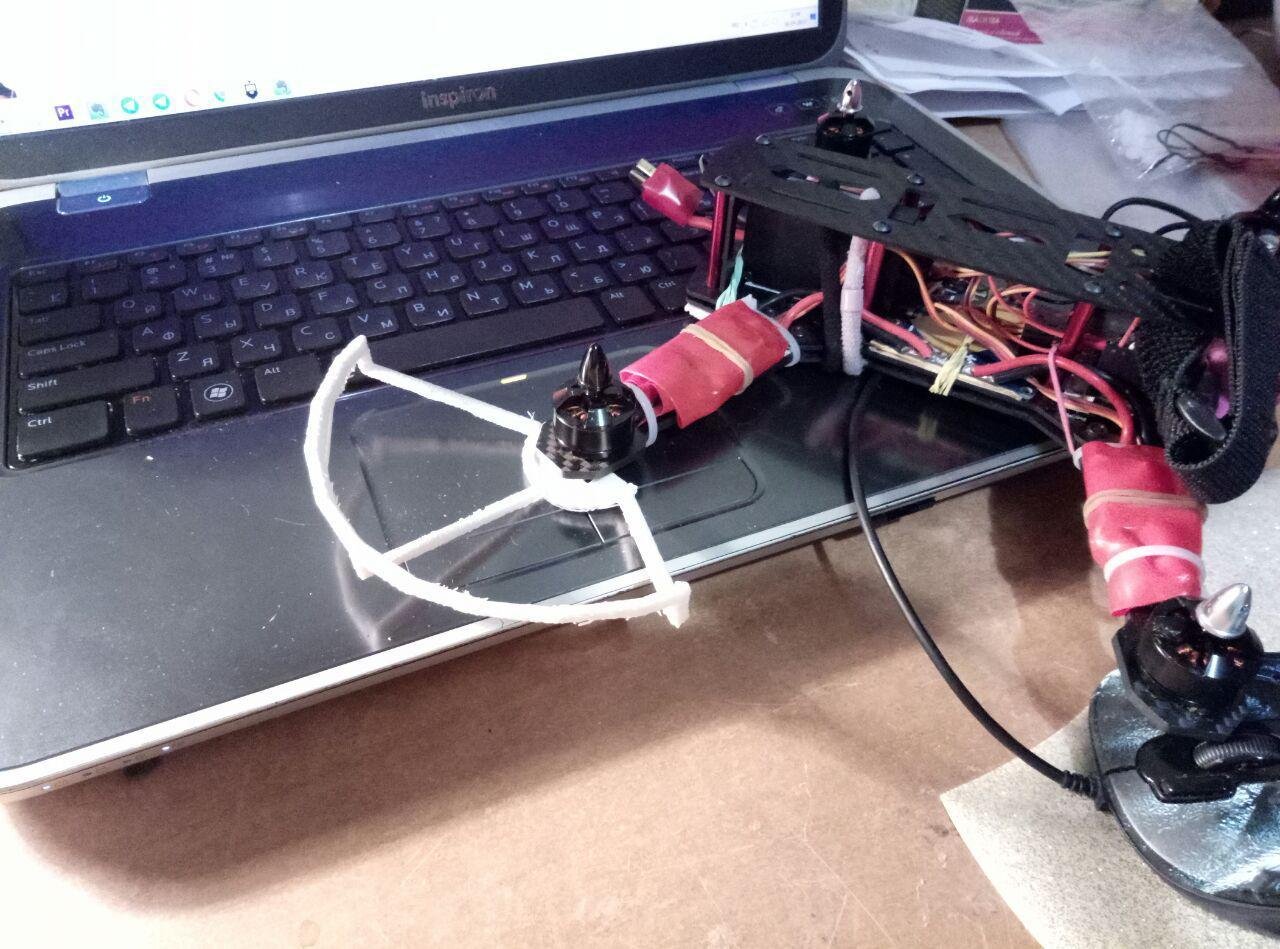
Protection for propellers printed on a 3D printer
10.8 Optional: protection for propellers. I printed it too on a 3D printer. Was useful only once, when did a trial takeoff in the room. After he crashed into the closet, the defense flew. I do not use it anymore. Holes on the protection, by the way, do not coincide with the holes on the frame. It is necessary either to do it yourself, or to modify the model on the computer.
I bought all small things here1 and here2.
10) Soldering iron itself.
Total cost ~ 11878 – 19451700
If you are surprised by the list, it is worth noting that most of everything that you buy, will serve you more than once.
Also I want to note that prices Are constantly changing, so I can not guarantee the minimum cost for links. I’m sure that you can find cheaper. I just shared sources one to one that coincide with mine.
Assembly
Frame assembly
There is a possibility that the set of parts will come to you without Instructions for assembling the frame. So it was with me. If it happened, then we collect it from a picture or video. At this stage, you should not tighten all the screws in the “combat mode”, you may have to dismantle the frame more than once. The upper part at this stage is not to be screwed at all, it is more convenient to work with the internals of the copter without it. Also do not forget about the washers that I wrote above.
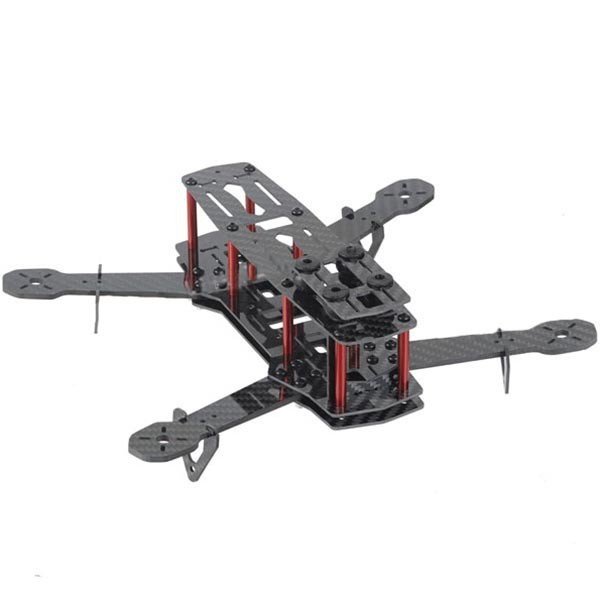
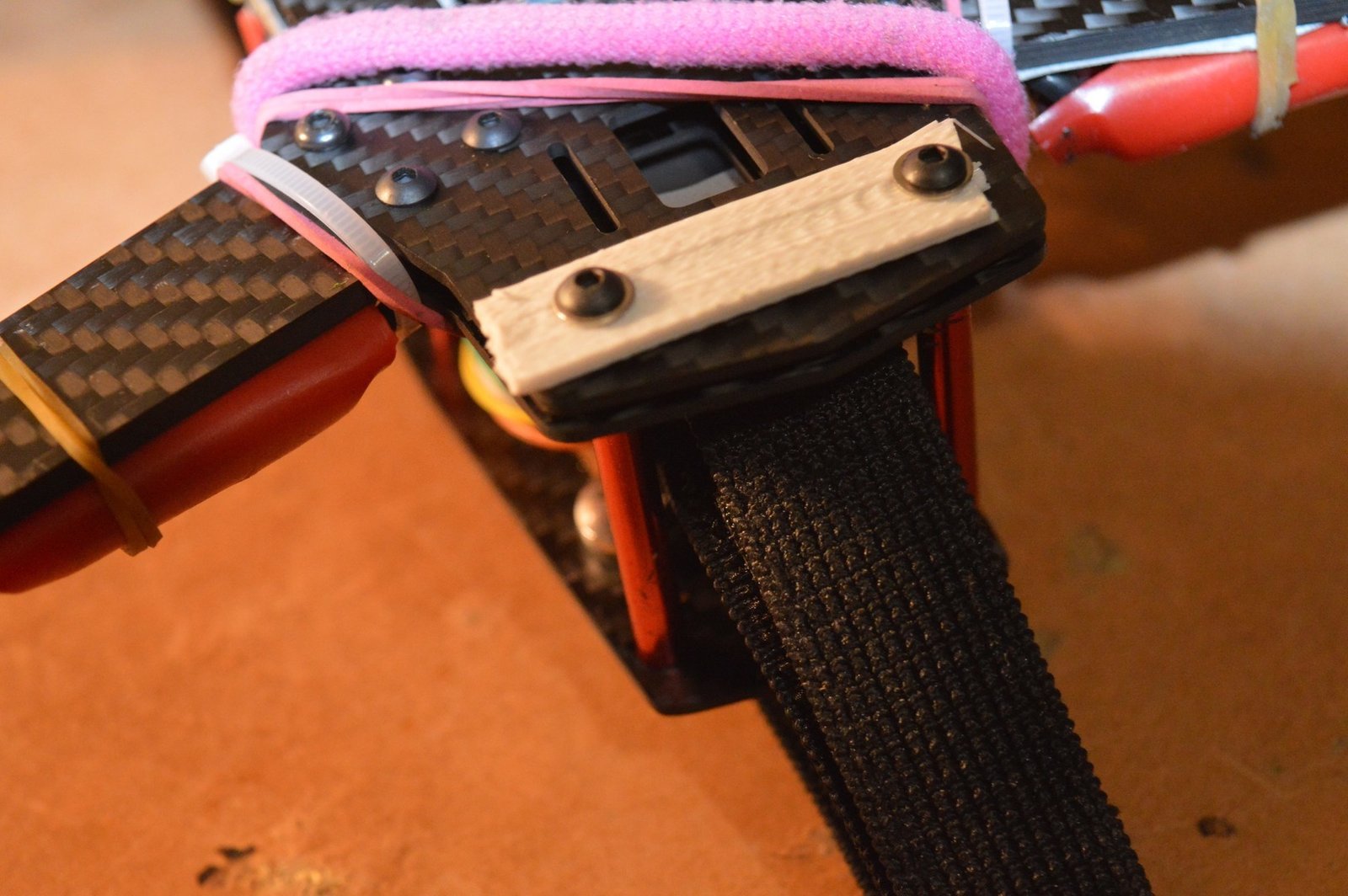
Do not forget about the puck. You certainly do not have a white plate – these are the same remnants from the 3D printed feet
Installation Motors
Very simple operation, if you remember the direction of rotation of the engines. Decide where you will be before. Motors with a black nut, rotating clockwise, set to the front left and rear right places.
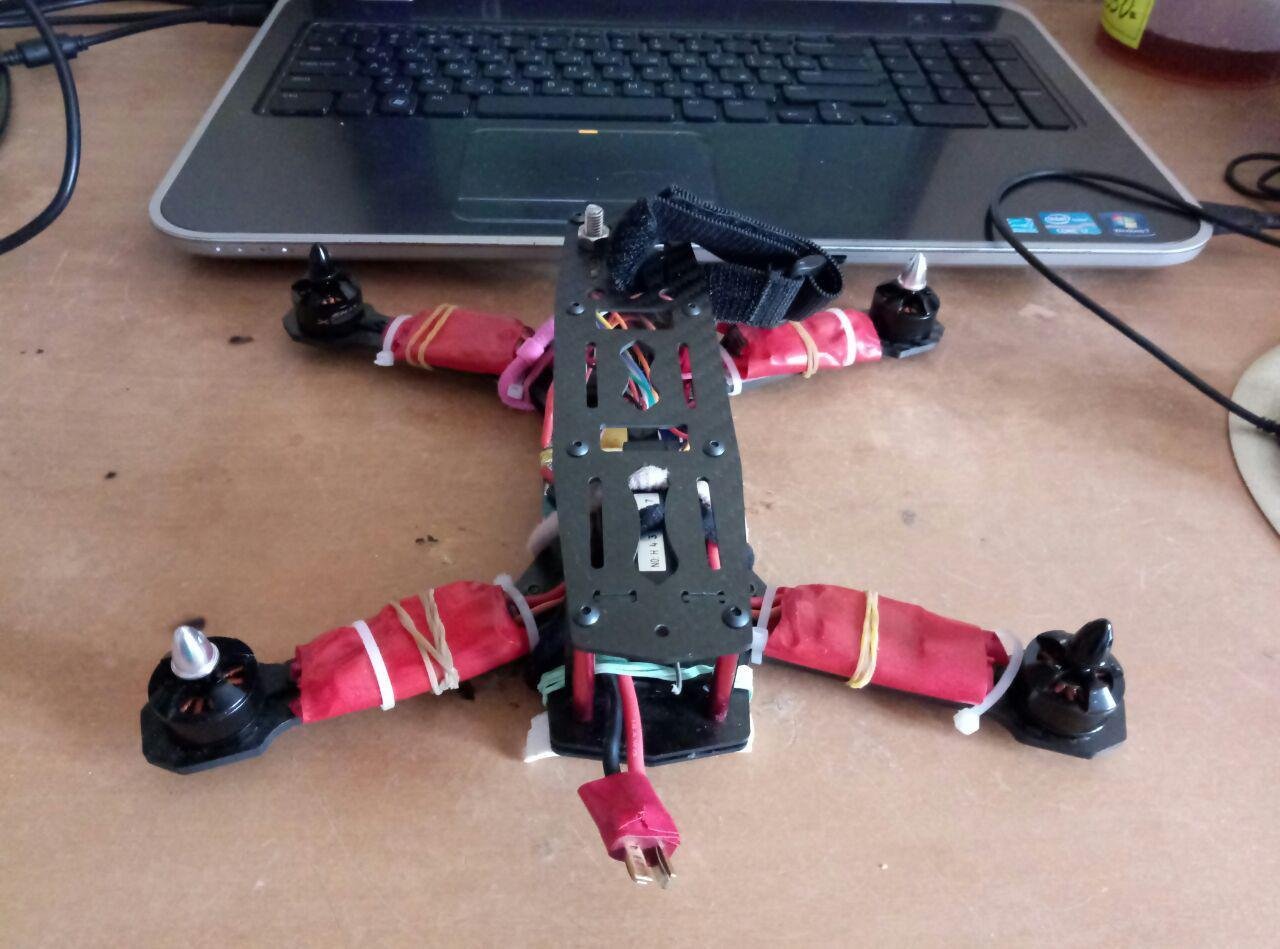
Note the location of the engines
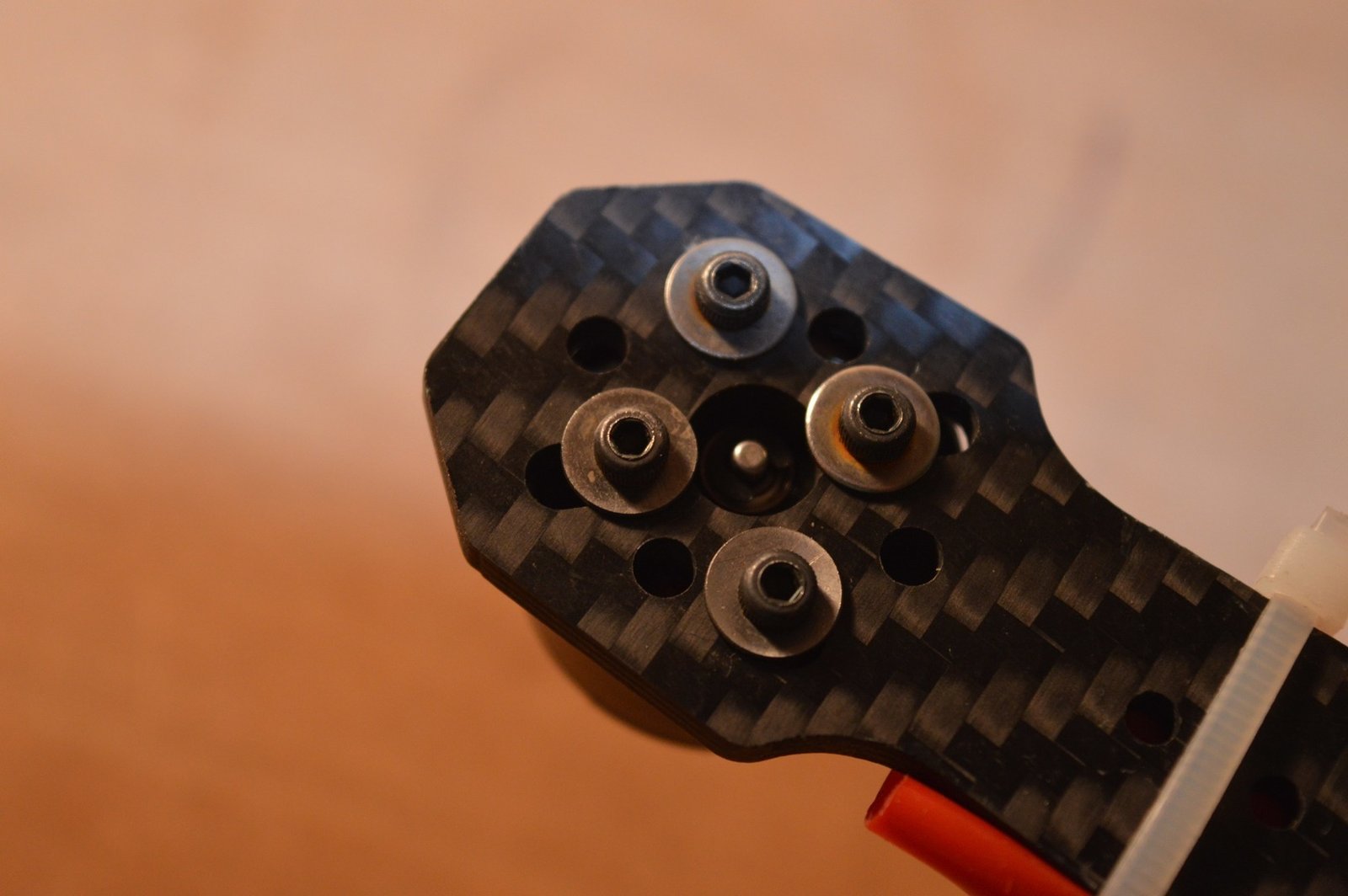
Mounting the engines
Soldering
Soldering the distribution board
So, you have already tried and decided , As at you all will be established. Time to solder. When soldering the board the most important thing is to observe the polarity! Which places to solder wires are not important, it all depends on how you plan to install the board.
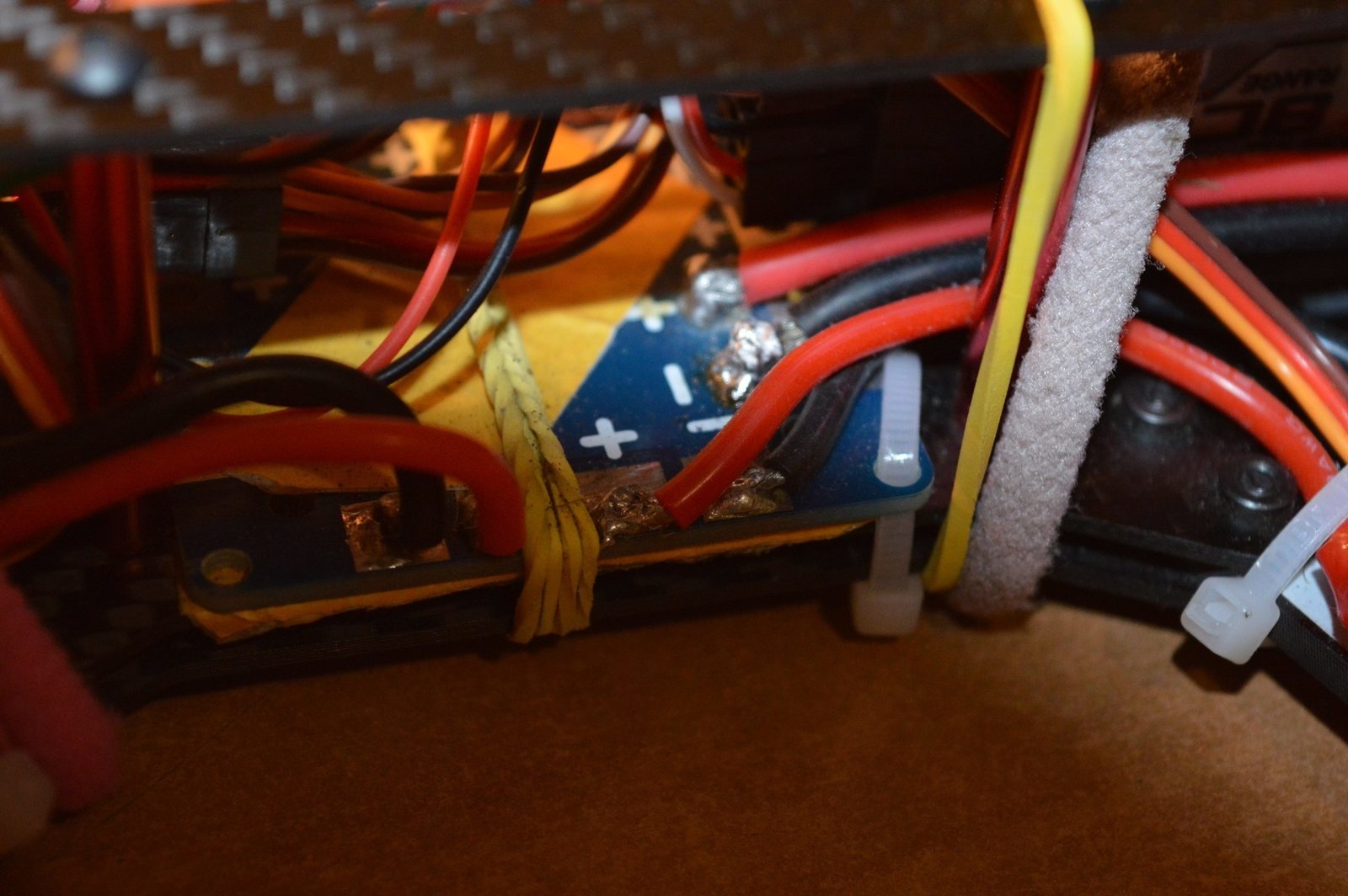
Soldering regulators And power wires. Observe the polarity. (My variant)
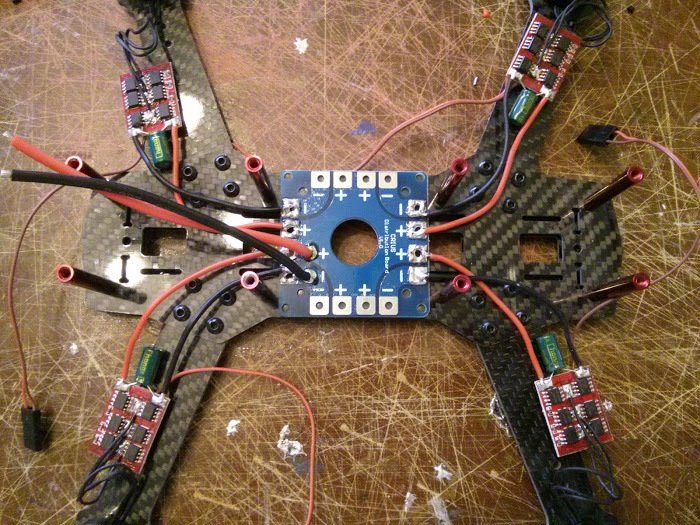
Soldering regulators and power wires. Observe the polarity. (Another option)
Soldering regulators to the motors
First of all we remove from the regulators the standard red thermostat. In order for the motors to rotate in the direction necessary to us, the regulators to the motors should be soldered like this:
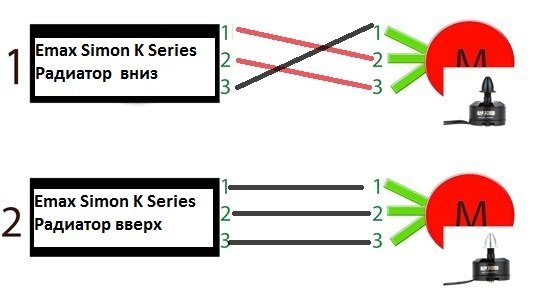
Connecting the regulators to the motors
I think that You have a question: where to put long wires from regulators. They can be repaired and removed completely, and you can cut to the desired length. The second method for beginners is preferable, since it is less likely to overheat the regulator during soldering.
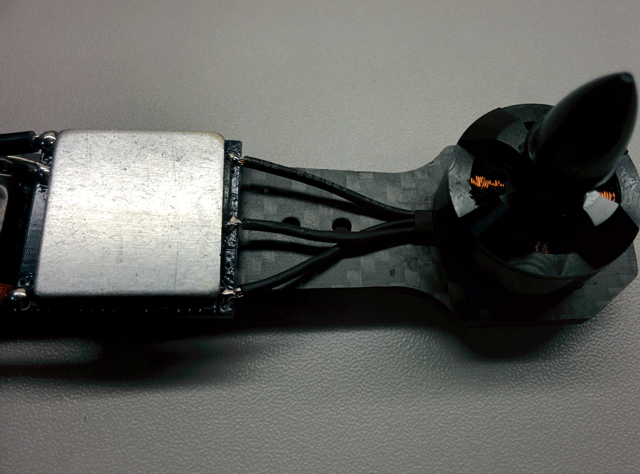
Completely sealed off regular regulator wires. So do not advise, it is better to just shorten the wires ( do not pay attention to the location of the wires, the picture is taken to show the other.) Correct scheme from above )
Solder the T-connector. The polarity is important!
We fasten the power board, the speed regulators
Time to strengthen. Remember that the copter frame conducts current, so the board must be isolated from it. I planted it on two layers of double-sided scotch, pulled the clamp from one end, and then fixed it with an elastic band.
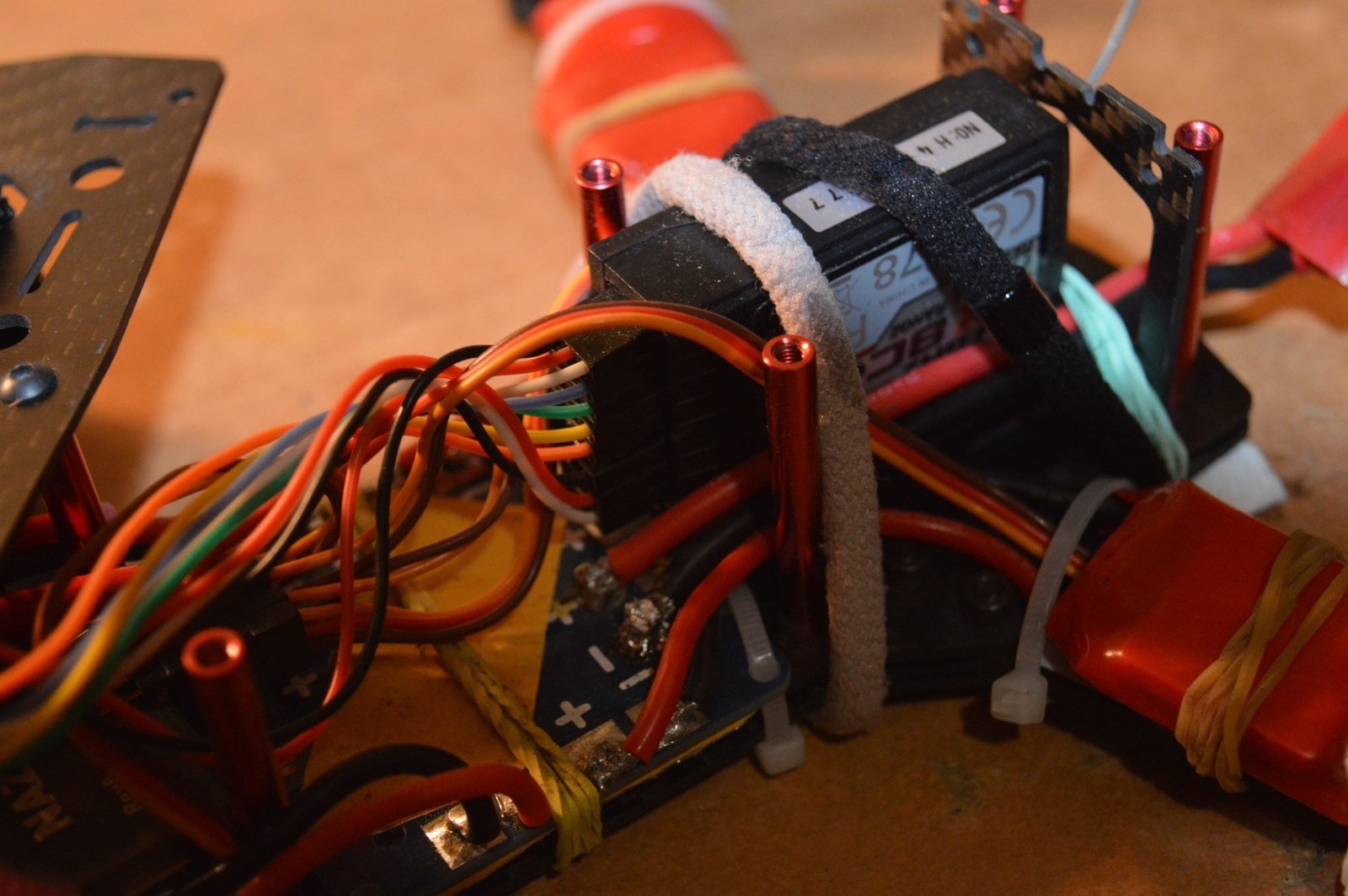
We fix the fee. Two layers of double-sided scotch tape + clamp + elastic
The speed regulators I hid in heat shrinkage, planted on a double-sided scotch, tightened the clamps and tightened for sure the elastic band. It looks more than reliable
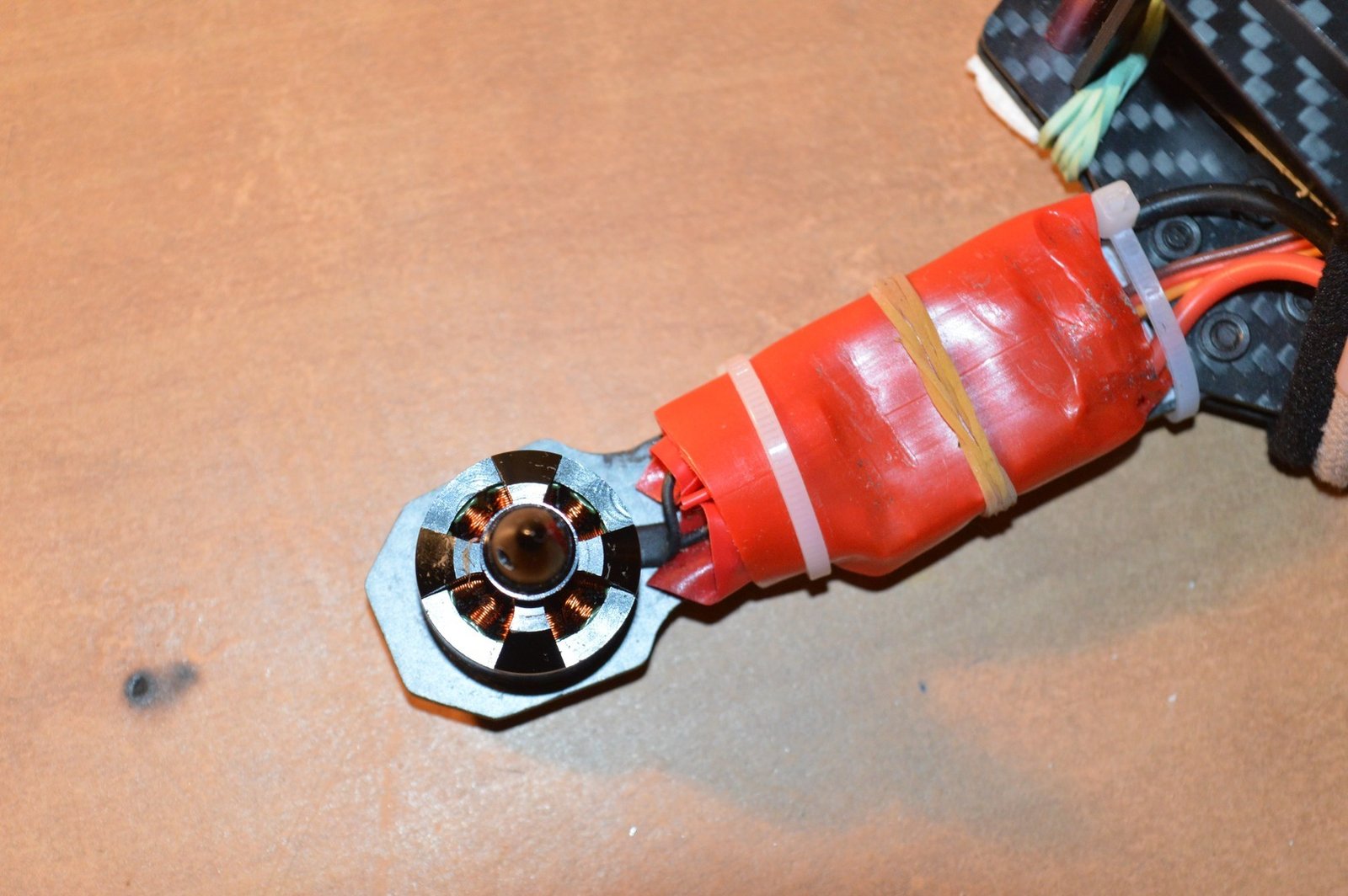
We fasten regulators. Heat shrink + double-sided scotch tape + clamps + elastic band
We fasten the flight controller, the receiver
Two-sided scotch and rubber bands come into play again. Again, the harder you fix, the better.
I have this done in the following way:
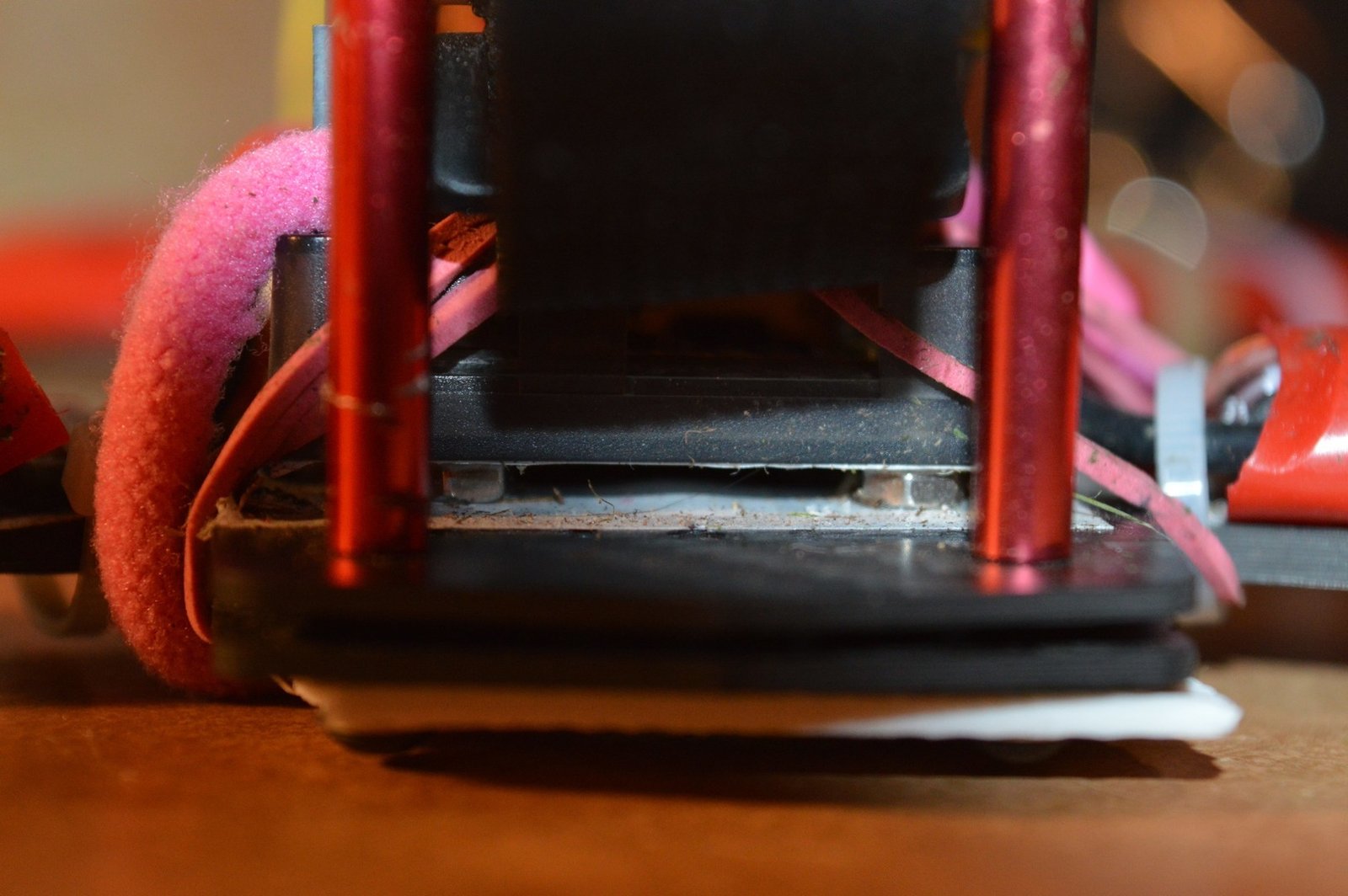
Attaching the flight controller (1). The grass remained after the crash

We mount the flight controller [2]

We mount the receiver. He also sits on the double-sided adhesive tape
We connect all wires
Regulators to the flight controller
From each of the regulators we have There are 3 wires. You need to do the following: on three of the four knobs you need to pull out the red wire from the connector. Connect the wires to the controller in a certain order, this will be discussed in the next section.
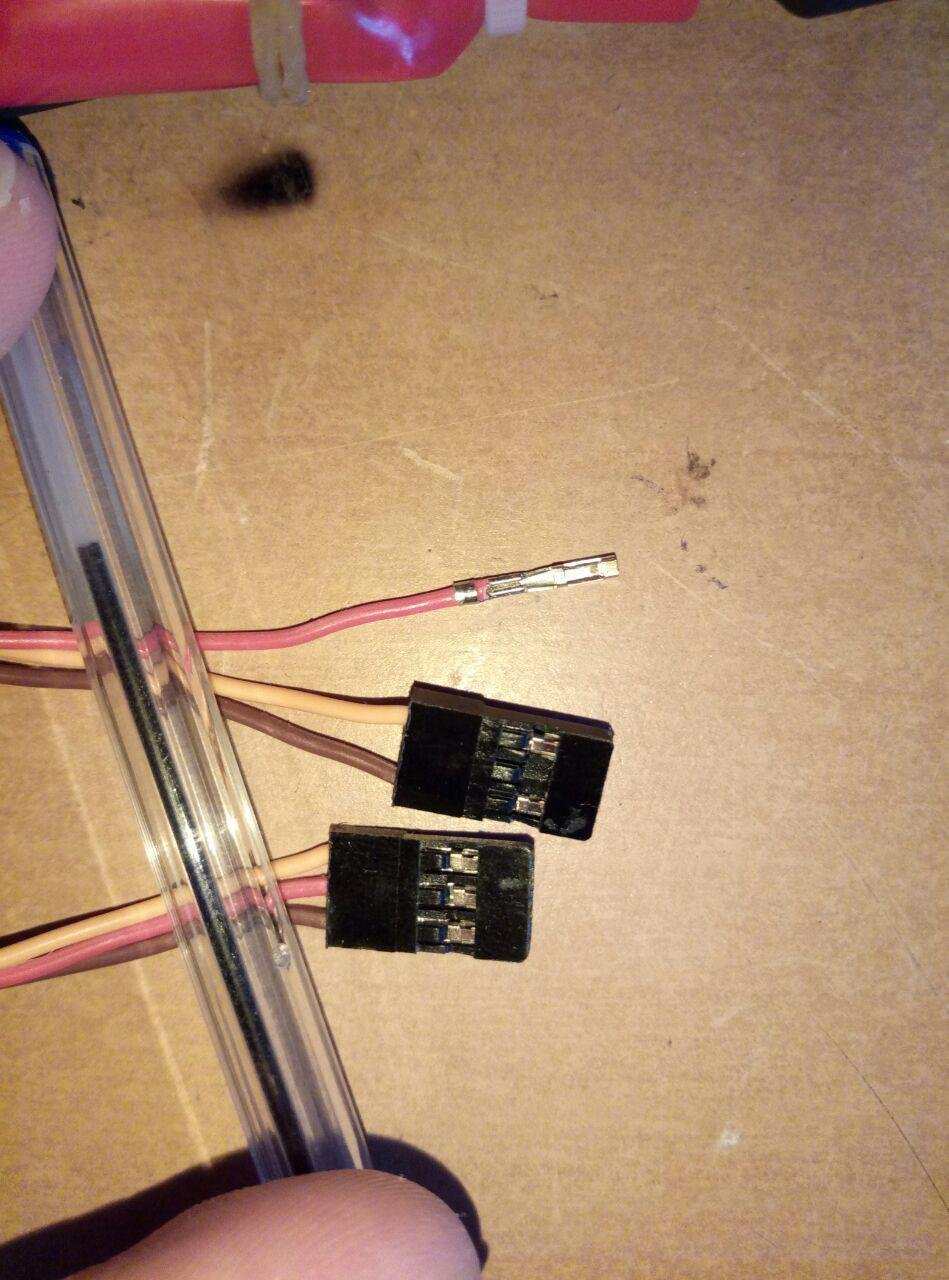
On three of the four regulators, you need to remove the red wire from the connector
The receiver to the flight controller
But here the order of connecting wires to each channel is not important. You just need to connect the power wire correctly – the white wire is closer to the side with the sticker.

We connect the receiver with the flight controller. The power wire should be located white closer to the side with the label
We screw the upper part of the frame, see what happened
I also added a “camera mount”.
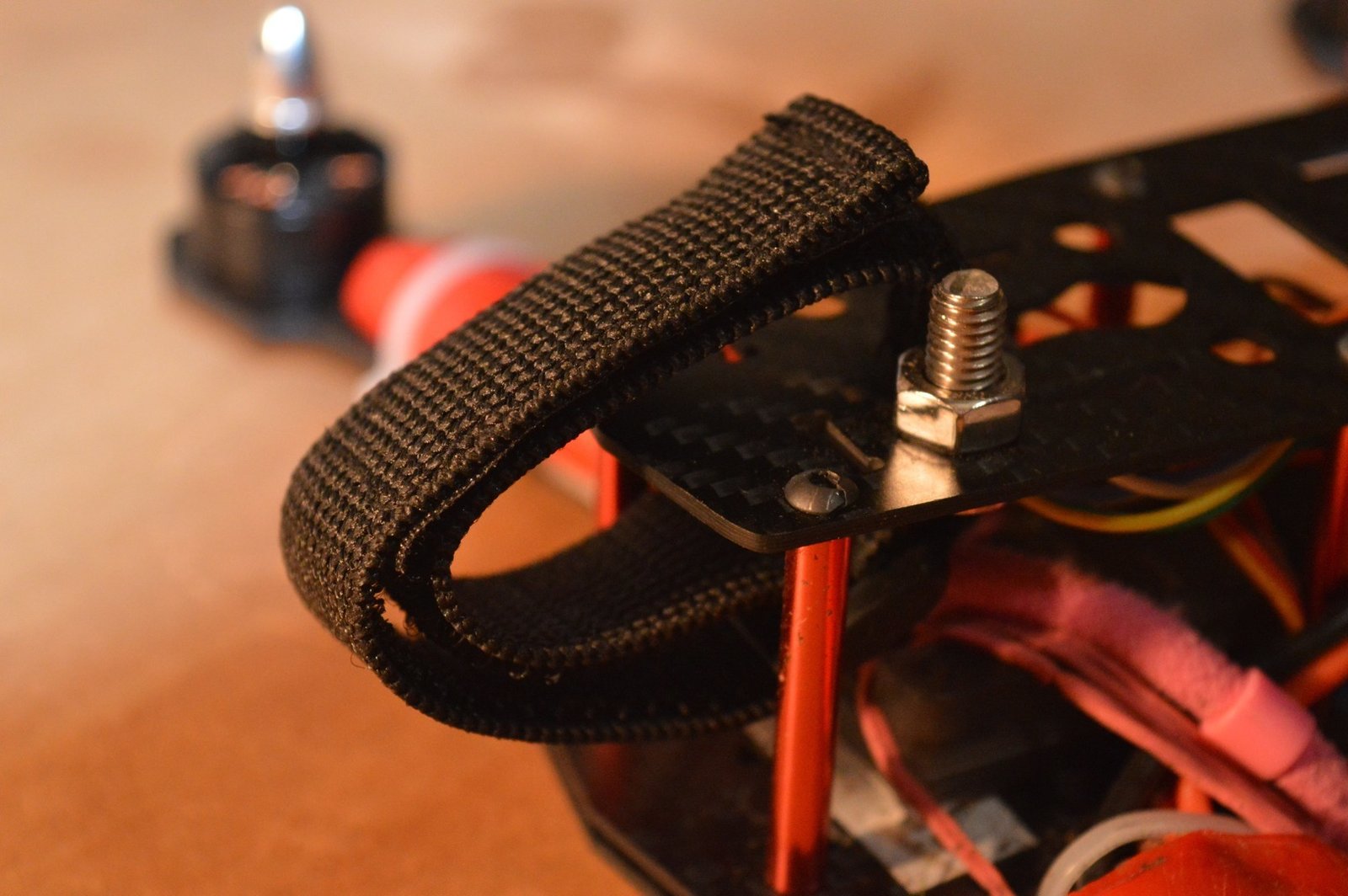
“Mount for the Camera”








